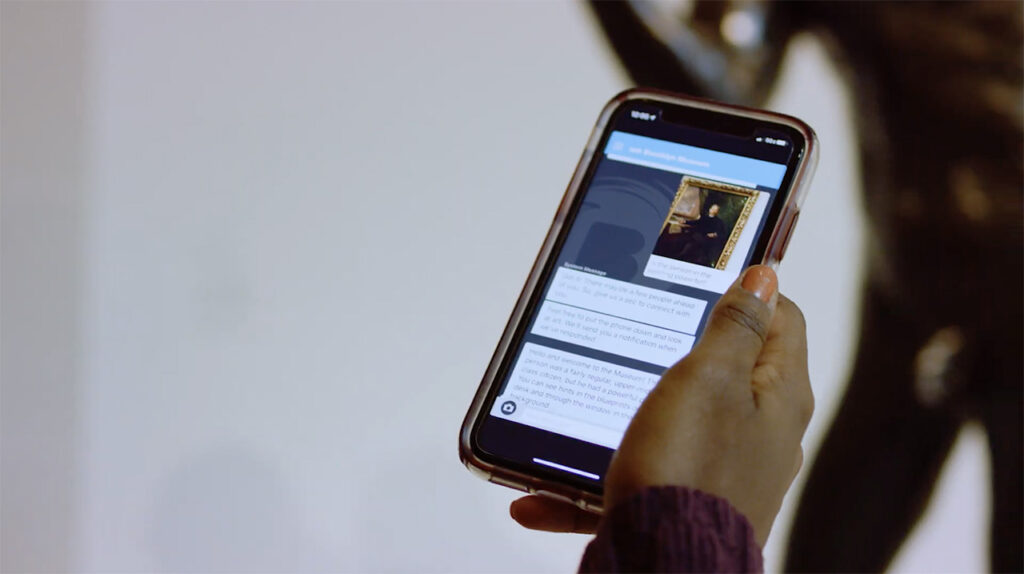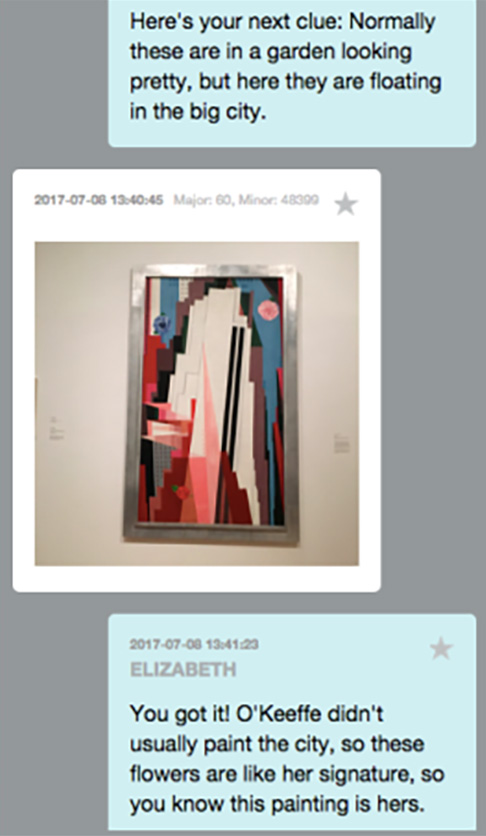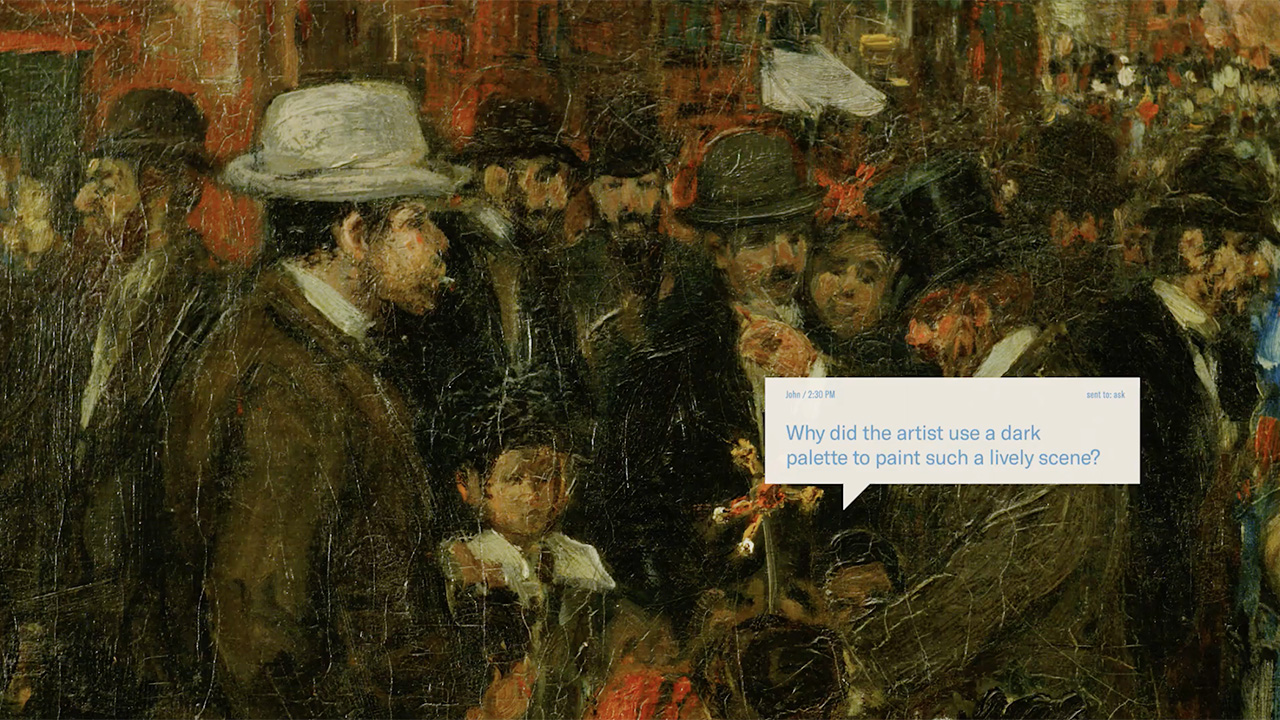The Brooklyn Museum’s ASK mobile app provides a “live, one-on-one texting” feature for users with questions about the institution’s collections or exhibitions. Funded by Bloomberg Philanthropies and developed in-house, the service, which is only available onsite, is the museum’s solution to visitors who want personalized treatment without the companionship of a guide or docent. When visitors text the ASK team via the platform, the museum’s team of experts will respond with answers, thoughts, and comments.
Such museum guides are not a new phenomenon. The Metropolitan Museum of Art offers visitors pre-recorded tours and commentary for a range of audiences, while Paris’ Louvre Museum offers audio guides on Nintendo 3DS consoles. While appreciated, they lack personalization — a gap that ASK, which was recently rebooted post-pandemic, hopes to fill with one-to-one interactions.
“We spent time in the galleries, observing visitors,” Sara DeYoung, the Brooklyn Museum’s Director of Visitor Experience and Engagement, told the Design is Everywhere podcast of the museum’s audience research, “and then talking to visitors and making notes about where they were asking questions [and] what questions were they asking us about.” She noted visitors preferred a personalized approach, not just cookie-cutter museum recommendations.
Below are a couple of takeaways from DeYoung’s guest spot on the podcast episode, where she elaborated on ASK’s build-out, functionality, and interactivity.
Center the visitor

“Our visitors are hungry for information about art and they wanted information that was personalized,” noted DeYoung. Image: Brooklyn Museum on YouTube
As a direct product of the museum’s visitor outreach efforts, ASK avoids the pitfalls of two-dimensional apps with canned recommendations and passive way-finding. Instead, the app offers users new entry points into Brooklyn Museum’s collection, personalizes the institution, and injects an element of play into the museum experience.
According to DeYoung, the museum is continuing to evolve these one-to-one interactions, in accordance with insights into visitor behaviors and preferences. It now promotes direct texting as well, separate from ASK, since users might be reluctant to download a single-use app; and has been monitoring how often audiences interact with its team (the lighting of an exhibition, for example, affects might how much or little a visitor texts). The ability for visitors to text remotely on their own devices, as opposed to a rented one, has also been a plus in post-COVID times.
“Our visitors are hungry for information about art and they wanted information that was personalized,” said DeYoung, and technology has helped Brooklyn Museum to really “broker that conversation and to scale access to a human.”
Make it interactive

A theme-appropriate scavenger hunt for the museum’s Georgia O’Keeffe: Modern Living exhibition. Image: Brooklyn Museum
Even if visitors weren’t sure about who was on the other side of ASK, their interaction on the app is enough to up their personal involvement and investment in the museum’s collection. To further user engagement, Brooklyn Museum has also launched self-guided and themed tours on the app, encouraging its audience to look and connect with exhibits in new or different ways.
For deeper interactivity, ASK has hosted scavenger hunts, inviting young museum-goers (and even older ones) to follow clues on the app’s text platform and track down objects across the institution’s galleries. The museum has reported the immense popularity of such activations, which, above all, nail the tricky task of getting children interested and engaged in art and history.
Such positive response, said DeYoung, is understandable. “It was initially aimed at kids, but a lot of adults do it too, and that’s not so much of a surprise,” she said. “In one of our pilot tests, where we were trying to send people to recommended objects, some took it in for a ‘Collect All 12’ game and did it that way, so gamifying it is not a huge surprise.”



